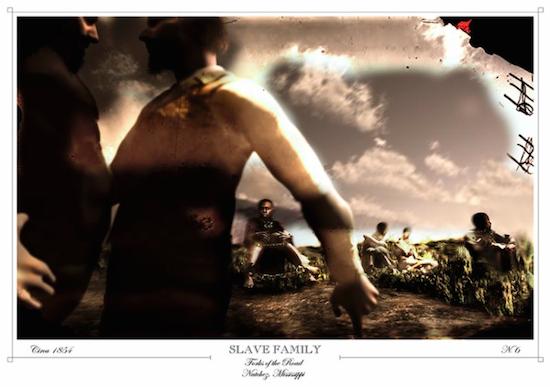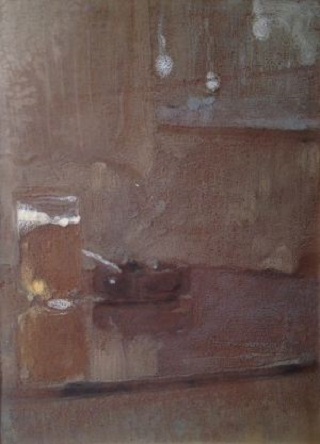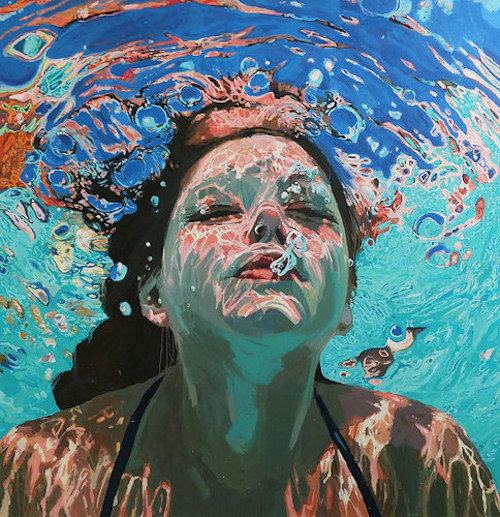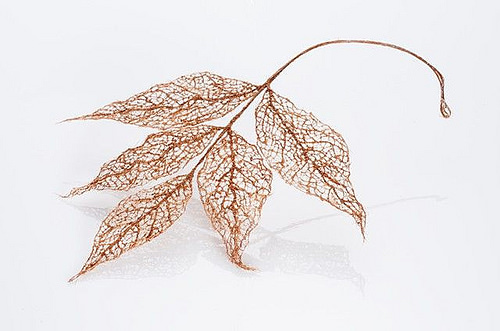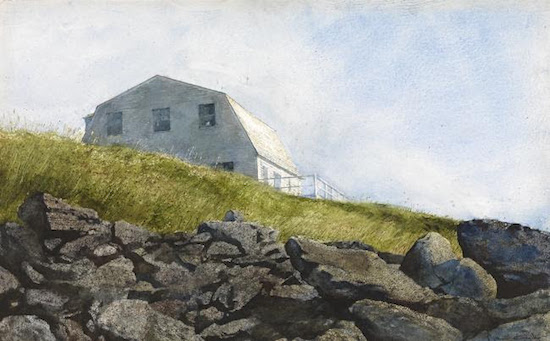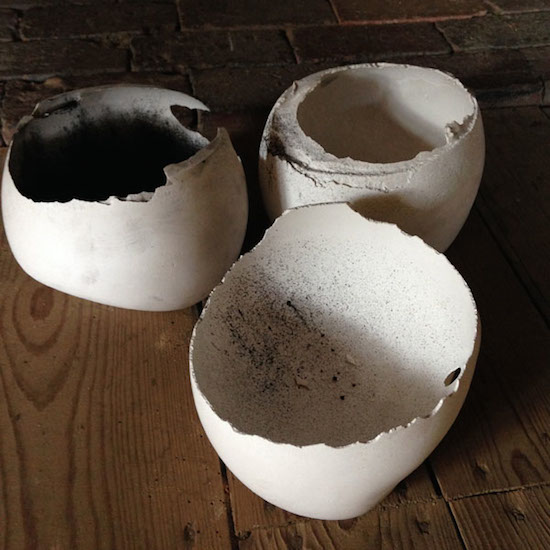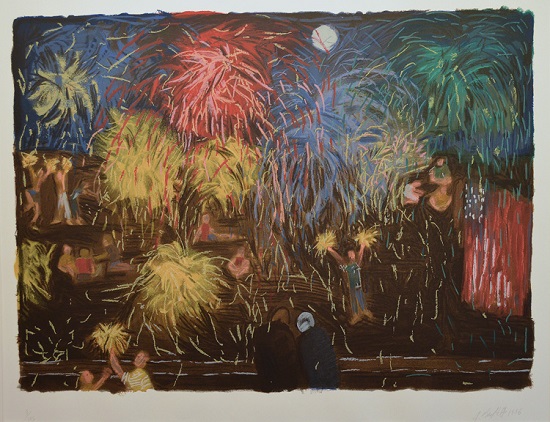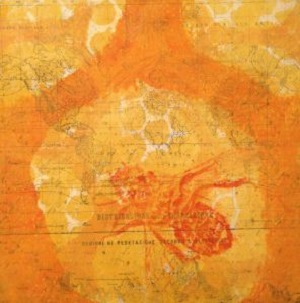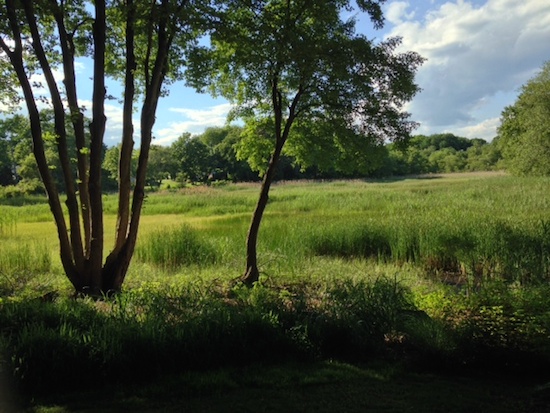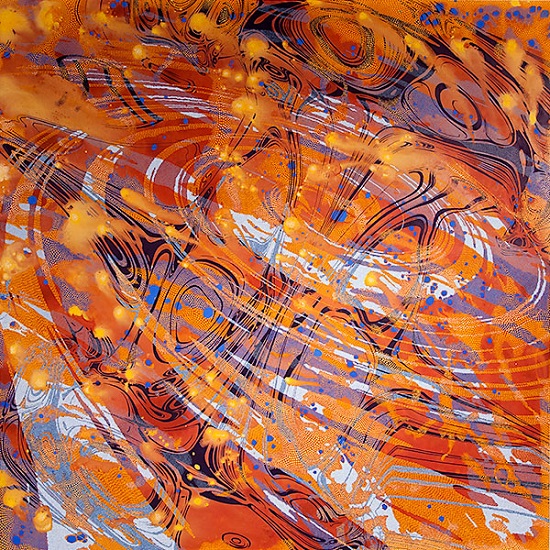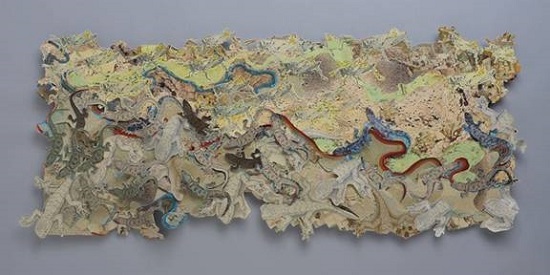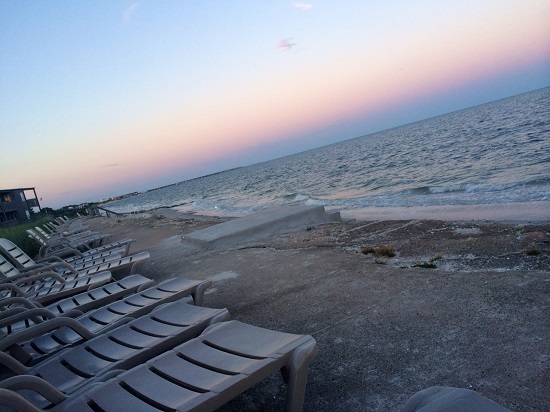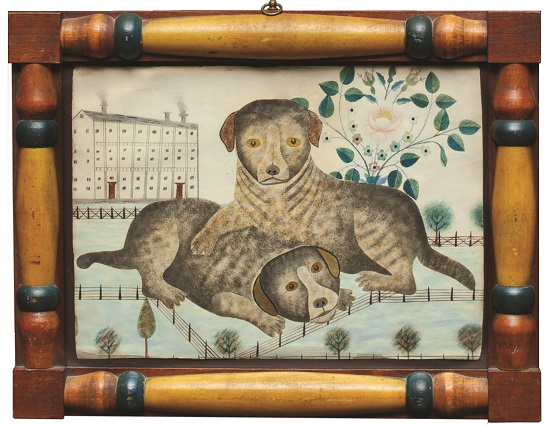
Not New England
"Slave Family—Forks of the Road, Natchez, Mississippi'' (montage), by STEPHEN GOLDING, at Galatea Fine Art, Boston, in the "NE Collective V Juried Show'', through Aug. 30.
Their 2 major food groups: Nicotine and alcohol
''Beer and Cigarette'' (oil on plexy), by MICHAEL DOYLE, at Patricia Ladd Carega Gallery, in Center Sandwich, N.H.
It wasn't that long ago that millions of workers daily repaired after their shifts to smoky joints like the one that this picture recalls. These places were very close to offices or factories. Indeed, the bars were often scientifically located specifically to serve this or that local big company.
Employees could chain-smoke simply by breathing in the air of the bar. For hours, they'd drink and do supplemental smoking. Then, especially if it were late in the week, repeat the process all over again the next day. Now folks can't smoke in bars, which reduces the desire for drink, which reduces the desire to smoke. (The big exception: The giant bars known as casinos, where state taxing authorities, and income-and-sales-tax-hating citizens, want the cross-promotional addictions of booze, cigarettes and gambling to keep pumping up state budgets from states' draw on casino revenues.)
For that matter, plenty of people went to bars on their "lunch break,'' and unless they were falling down drunk when they returned to the offices or factory, it was tolerated -- indeed, expected. Executives did it, too, albeit more likely ordering cocktails and bottles of wine than what their lackeys bought, which was mostly (bad) beer.
About half the news desk staff at the old Boston Herald Traveler, where I worked, would go next door to a joint called Foley's and toss back a few at their "lunch,'' which came at mid-evening. (It was a morning paper so the paper was mostly produced between about 6 p.m. and 2 a.m.).
The daily heavy-drinking habit, along with relentless deadlines, rapidly aged the editors. Many of those who I thought were around 60 were in fact about 40. But many were addicted to the daily adrenaline of deadines and breaking news (much of which was suffused with false urgency).
All in all, a lousy way to live, but we all got stories about at least mild depravity out of it. Some of us even still remember them.
--- Robert Whitcomb
'The commons' and private property in New Haven

The ExcessNYC cargo bike hits the streets of Brooklyn in 2010 to deliver food from a landfill for people to heat or compost instead. Photo by BROOKE SINGER and RICHARD MIRANDO.
"Vagaries of the Commons,'' the current exhibition (through Sept. 13) at Artspace, in New Haven, "attempts to make sense of the increasingly complex but vital notion of 'the commons'. Legislation regulating 'the commons' has moved into the digital realm and increased privatization across America's major industries (health care, education and the arts) makes life-sustaining resources available to only a part of the population,'' says the gallery's over-the-top blurb.
It's hard to starve to death in America. Maybe ''life-enhancing'' is what they meant instead of "life-sustaining''?
Anyway, '''..{T}he featured artists remake private spaces into common spaces, reflect on private objects that temporarily dot New Haven's commons (the central New Haven Green, steps from Artspace, for example) and apply for the right to trespass on private domain.''
Long days, short years
Gypsum objects by ROBERT TRUMBOUR, in his "Now. Then. Again'' show at the Cape Ann Museum's White-Ellery House, in Gloucester, Mass., at 11 a.m. - 3 p.m. on Aug. 2
His show is an "exploration of time and memory'' -- perhaps particularly evocative in a building as old as the White-Ellery House, built in 1710.
The museum's blurb says Mr. Trumbour explores ideas ''provoked by 19th Century philosopher Henri Bergson who, in response to his dissatisfaction with science's framing of time, argued for a theory he called 'Duration': the notion that time is not quantitative and linear but rather qualitative and temporal and continually informed by the dynamic process of memory. Trumbour’s interest in this site is not concerned with specific memories or histories per se, but rather with the space that exists between memory and the present moment. ''
Marcel Proust's work was deeply influenced by Bergson's inquiries. Proust sought to recapture the experiences of the past through his great seven-part novel, A la Recherche du temps perdu, the writing of which he saw as his justification for having lived. The novel is hundreds of pages too long, in part because time ran out for Proust, who only lived to 52 and so could not adequately edit it. But it is also one of the greatest literary investigations of the human condition.
And another summer flies by....
Red skies
"Red Sky'' (oil on canvas), by PAUL RESIKA, at Berta Walker Gallery, Provincetown, in his Aug. 1- Aug. 17 show.
My father and others in our coastal town liked to say the old line:
"Red sky in morning, sailors take warning/ Red sky at night, sailor's delight.''
But I never found much connection between the time of day that the sky, or at least the horizon, was red, and coming storminess or good weather.
It was just another bit of comforting folk malarkey.
-- Robert Whitcomb
Roz Chast on 'Being, Nothingness,' etc.
From the show "Being, Nothingness and Much, Much More: Roz Chast, Beyond The New Yorker,'' at the Bruce Museum, in Greenwich, Conn., through Oct. 19.
Ms. Chast is best known a cartoonist for The New Yorker but she is also a distinguished writer. Her latest book, Can’t We Talk About Something More Pleasant? (Bloomsbury, 2014), deals with her aged parents -- a topic of great interest and often exasperation for Baby Boomers who are dealing with such people even as they slide and stagger into old age themselves.
Basis of oneness
"Frequencies Rising'' (acrylic on panel), by LYNDA SCHLOSBERG, in her show "Lynda Schlosberg: Zero Point Field,'' at Kingston Gallery, Boston, through July 11.
She says that in these paintings she mediates on the idea that nothing ever dies and that everything is connected through a never-ending unified field of energy.
Outside in
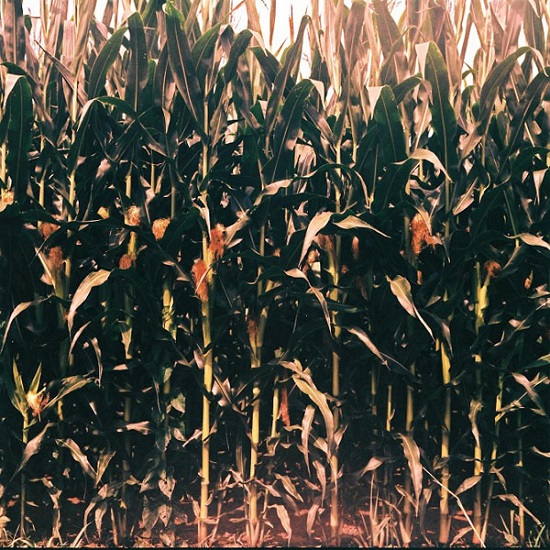 From the show "Bringing the Outside In,'' by JULY WHITE and KYLE NILAN, at the White-Ellery House, in Gloucester, Mass., July 5, from 11 a.m. to 3 p.m. Through a collection of audio and visual art, White and Nilan investigate “the outside” and their relationship to it as visitors, inhabitants and collectors.
From the show "Bringing the Outside In,'' by JULY WHITE and KYLE NILAN, at the White-Ellery House, in Gloucester, Mass., July 5, from 11 a.m. to 3 p.m. Through a collection of audio and visual art, White and Nilan investigate “the outside” and their relationship to it as visitors, inhabitants and collectors.
Soviet poster art
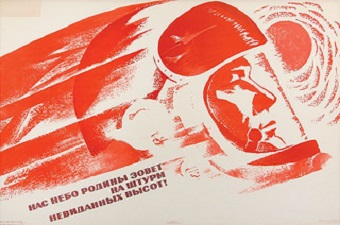 The Museum of Russian Icons, in Clinton, Mass., is helpfully running a new show, "Darker Shades of Red,'' that examines the propaganda of the murderous totalitarian regime that ruled so much of Eurasia from 1917 to the late '80's and whose legacy of xenophobia and corruption still pollutes expansionist Russia, whose leaders want to re-establish the Russian Empire in updated form.
The Museum of Russian Icons, in Clinton, Mass., is helpfully running a new show, "Darker Shades of Red,'' that examines the propaganda of the murderous totalitarian regime that ruled so much of Eurasia from 1917 to the late '80's and whose legacy of xenophobia and corruption still pollutes expansionist Russia, whose leaders want to re-establish the Russian Empire in updated form.
The show includes 55 original posters (translated into English) and such stuff as medals, orders, statuettes and factory banners. The posters do have a weird beauty that goes beyond kitsch.
